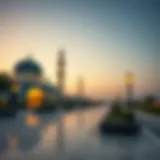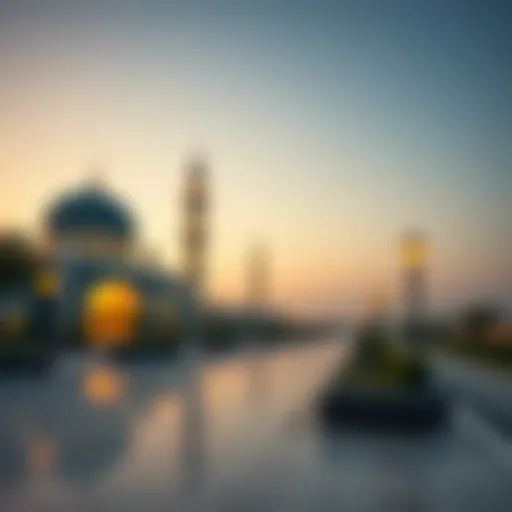Ras Khor: A Deep Dive into Dubai's Ecological Gem
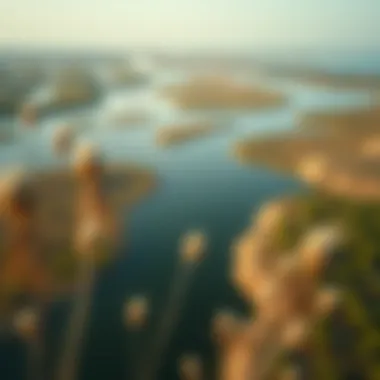
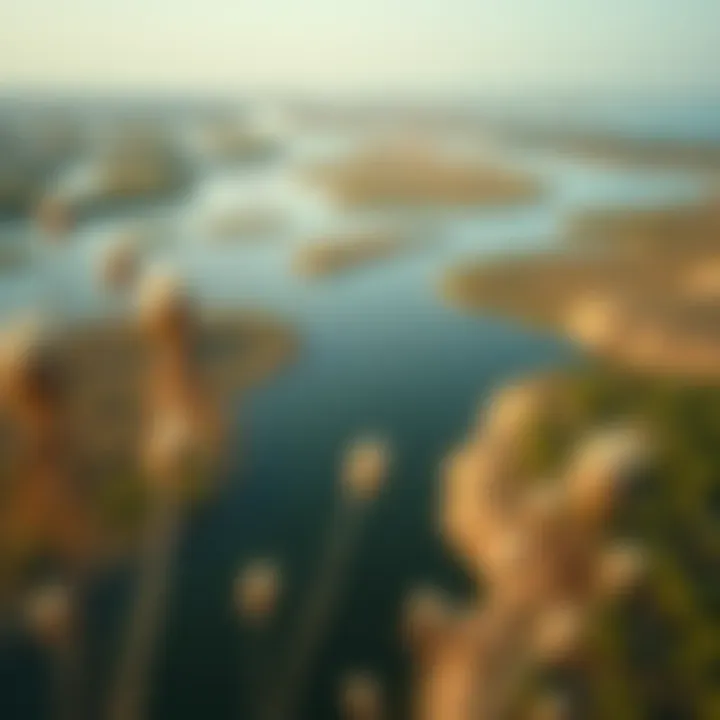
Intro
Nestled on the eastern edge of Dubai, Ras Khor stands out as a striking ecological haven amidst the fast-paced urban landscape of this vibrant city. Known primarily for its rich biodiversity, this area offers not only a refuge for wildlife but also a glimpse into the delicate interplay between nature and urbanization. The convergence of these two worlds raises fascinating questions about sustainability, urban living, and the future of properties located in such unique locales.
As we take a deeper look into what makes Ras Khor significant, we'll explore its environmental importance, the unique flora and fauna that thrive here, and the role this ecological area plays in Dubai's grand real estate narrative. Given the increasing focus on green living and eco-conscious investments, understanding Ras Khor is vital for homebuyers, investors, and developers alike.
Through this exploration, it's essential to consider how the area's protected status impacts real estate potential while also recognizing the necessity of preserving its ecological heritage. Each section of this article aims to provide pertinent insights, examine current trends, and analyze the implications of the ongoing push towards sustainable development in and around Ras Khor.
Join us as we navigate the rich tapestry of Ras Khor's ecosystem, real estate dynamics, and the interplay between these two deeply intertwined elements, offering a comprehensive look at what may lie ahead in this flourishing corner of Dubai.
Prelims to Ras Khor
Ras Khor holds a prominent place in Dubai's ecological landscape, serving as both a sanctuary for wildlife and a vital component of the city's urban development. As an area teeming with life and potential, it invites varied interests, including investors, homebuyers, realtors, expatriates, and developers. This blend places Ras Khor at the intersection of nature conservation and urban growth, requiring a nuanced understanding of its significance, both environmentally and economically.
Geographical Context
Ras Khor is strategically located along the coastline of Dubai, bordered by the Persian Gulf to the west and the bustling urban areas to the east. This prime location is marked by its estuarine environment, where fresh and saltwater mingle, creating a unique ecosystem that supports diverse plant and animal species. The area spans approximately 620 hectares, encompassing wetlands, mudflats, and lagoons, which act as a natural barrier against coastal erosion.
The topography of Ras Khor is characterized by shallow waters, intertidal zones, and rich sediments that foster specialized habitats for various wildlife. Moreover, its proximity to major arterial roads and the Dubai Metro enhances its accessibility, appealing to both nature enthusiasts and developers alike. Investing here offers strategic advantages, particularly for real estate projects that wish to align with sustainable principles while tapping into Dubai's booming property market.
Historical Background
The historical backdrop of Ras Khor provides insights into its significance over the decades. Originally, the wetlands served as crucial breeding grounds for numerous bird species, including migratory ones traveling along the East African–Western Asia Flyway. Local communities historically relied on the area for fishing and gathering materials such as salt and reed, which were essential for their livelihoods.
With the rapid urbanization of Dubai from the late 20th century, Ras Khor faced the threat of development pressures. However, historical preservation efforts led to its recognition as a vital ecological area. The establishment of the Ras Khor Wildlife Sanctuary in 1998 marked a pivotal change, enabling protection and conservation initiatives that have helped to carve a valuable niche for the site amid the city's concrete sprawl. This sanctuary not only plays a critical role in biodiversity conservation but also acts as a reminder of the importance of ecological stewardship in the age of urban expansion.
Ecological Significance
Ras Khor stands out as a vital ecological treasure within the sprawling urban landscape of Dubai. Its ecological significance cannot be understated, as it serves not only as a sanctuary for diverse species but also as a living example of how urban development can coexist with nature. The area highlights the intricate balance between human activity and the preservation of natural environments, making it a focal point for environmental conservation efforts, ecological research, and community engagement.
Biodiversity Overview
Ras Khor is home to an astonishing array of life forms, reflecting a rich tapestry of biodiversity. From various plant species to numerous migratory birds, the wetland area serves as a crucial habitat. The presence of over 450 species of birds, including the majestic flamingo, underlines its importance in global biodiversity terms.
This area acts as a breeding and feeding ground for many species, contributing to ecological resilience and overall health of the planet. Keeping these ecosystems intact is essential for maintaining biodiversity, as they provide critical services such as air and water purification, carbon storage, and stabilization of the soil.
Wetland Ecosystem
The wetland ecosystem of Ras Khor plays a critical role in maintaining ecological balance. It acts as a natural filter for pollutants, helping to improve water quality while also serving as a buffer against flooding. Wetlands are often referred to as the 'kidneys of the landscape' for this very reason.
This ecosystem is not merely a passive structure; it's alive with interactions and energy. They provide nesting sites, support aquatic life, and facilitate nutrient cycling—all of which are fundamental for sustaining biodiversity. This supports not only the ecological network but also the local community that relies on these natural resources.
Flora and Fauna
Endemic Species
The endemic species found in Ras Khor contribute significantly to the ecological integrity of the area. These species, native to the region, adapt uniquely to the local climate and soil conditions, offering unique advantages and challenges for conservation.
The crucial characteristic of these plants is their specialized requirements for growth, often making them sensitive to changes in habitat conditions. For instance, individuals of the Aquatic Salt Marsh Plants are specially adapted to deal with saline conditions, showcasing resilience and survival in this ecosystem. However, their specific needs make them vulnerable to habitat alteration due to urban development, prompting an urgent need for protective measures.
- Unique features of endemic species include:
- Adaptation to saline environments
- Cultural significance to the local communities, often linked to traditional practices
- Higher risk due to climate change impacts
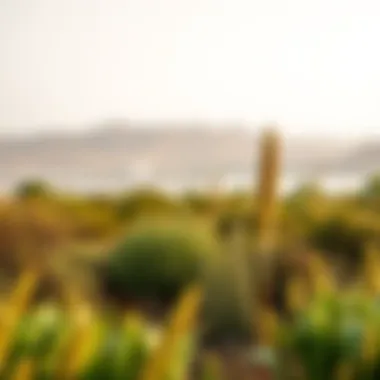
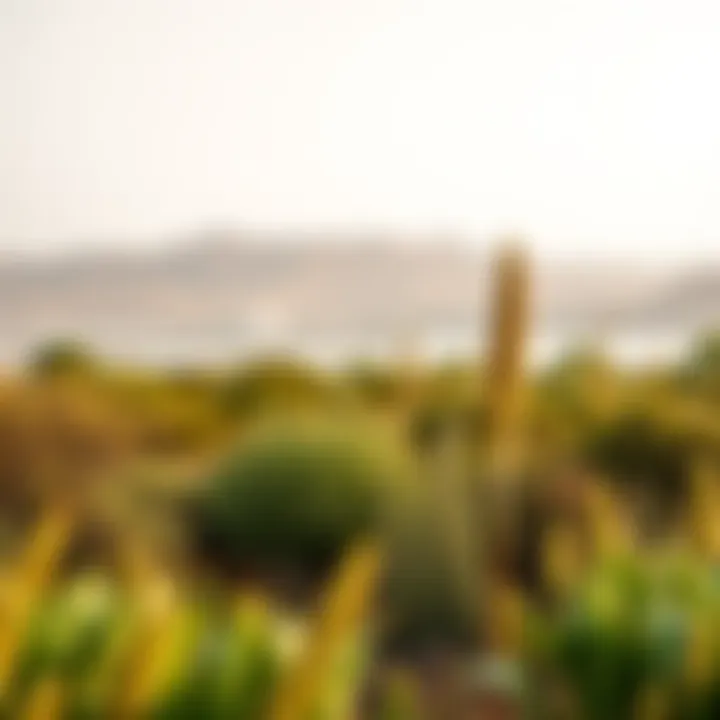
Bird Migration Patterns
Bird migration patterns are another cornerstone of the ecological significance of Ras Khor. These patterns showcase the area as a pivotal stopover in the migratory routes of many species, including those traveling between Europe and Africa. The spectacle of migratory birds taking rest here enriches both the local experience and global biodiversity.
Migrating birds rely on specific habitat features like food availability and safe resting spots. Ras Khor's wetland provides both, making it an irreplaceable resource for conservation efforts and ecological studies.
- Characteristics of bird migration patterns include:
- Seasonal variations leading to different population dynamics
- Ecological dependencies, such as the need for diverse feeding grounds
- Vulnerability to habitat loss, emphasizing a need for protected zones
This interlinking of species, habitats, and natural processes is a testament to the ecological value of Ras Khor. Not only does it support varied life forms, but it also underlines the importance of wildlife conservation in an urbanizing world. As such, understanding and protecting Ras Khor stands pivotal for current and future generations.
Conservation Status
The conservation status of Ras Khor plays a crucial role in understanding its value as an ecological haven. Recognizing its ecological significance is essential, especially within the context of rapid urban development in Dubai. Ras Khor’s conservation efforts highlight the balance needed between urban expansion and environmental preservation. Here, we will delve into the legal frameworks protecting this area, as well as community and government initiatives that aim to preserve its unique environment.
Legal Protections
Ras Khor benefits from a series of legal protections aimed at safeguarding its diverse ecosystems. Designated as a protected area, it falls under various local and federal regulations which restrict certain harmful activities. These legal safeguards are not merely bureaucratic; they serve an essential purpose in maintaining biodiversity.
An example of such protection comes from the Dubai Municipality. They have implemented regulations that prohibit fishing and hunting within certain zones of Ras Khor. This not only helps preserve the natural habitats but also supports the rich fauna that thrives there. Such legal measures contribute to a structured approach in preserving Ras Khor’s integrity against urban encroachment and pollution.
Conservation Efforts
Community Involvement
The role of community involvement in the conservation of Ras Khor cannot be overstated. Local residents and various NGOs actively participate in preservation activities, making sure their voices are heard in the decision-making processes. This grassroots involvement has a profound impact, effectively serving as a bridge between the public and the policymakers.
Notably, community efforts often include clean-up drives and educational programs that inform the public about the importance of preserving their environment. This participatory approach fosters a sense of ownership and responsibility towards Ras Khor, thus benefiting the overall goal of its conservation.
One unique feature of community involvement is the volunteer program that draws both locals and expatriates to take part in hands-on conservation activities. This approach not only educates participants but also creates a network of individuals invested in the future of Ras Khor. However, one disadvantage could be the varying levels of commitment among volunteers, which may hinder consistency in conservation efforts.
Government Initiatives
On the other side of the coin, government initiatives form the backbone of Ras Khor’s conservation strategy. The UAE government has recognized the area’s importance and has undertaken several initiatives to promote sustainable practices in and around Ras Khor. One notable feature is the implementation of environmental impact assessments for new developments, ensuring that economic growth does not come at the cost of ecological degradation.
Such initiatives aim to tackle pressing issues like pollution and resource depletion. Government-led programs often involve partnerships with educational institutions to promote research and awareness about the biodiversity within Ras Khor. The use of technology for monitoring wildlife and habitats is yet another advantage, providing real-time data that supports conservation activities. However, challenges remain in ensuring adherence to these regulations, especially with rapid urban development taking place.
"The intersection of urban growth and ecological preservation is a delicate dance, and Ras Khor stands as a model of how to balance the two."
Cultural Significance
Ras Khor is not merely a geographical spot on the map; it serves as a living testament to the symbiosis between urban development and cultural identity. When we talk about cultural significance, we are diving into the richness of traditions and local practices shaped by this unique environment. The ecological characteristics of Ras Khor are not only vital for biodiversity but also for the communities that have thrived in its surroundings.
Local Communities
The local communities around Ras Khor play an integral role in both preserving the area and enriching its cultural tapestry. People living near this ecological haven often rely on its resources for their daily needs while also engaging in activities that promote environmental awareness. Here, you will find a mix of locals and expatriates together, fostering a unique multicultural atmosphere that emphasizes cooperation and mutual respect.
Their interactions with the habitat encourage a collective attitude toward conservation. Educational programs and community events not only highlight the importance of Ras Khor but also serve as a bridge connecting different cultural practices and perspectives.
Cultural Heritage
Traditional Practices
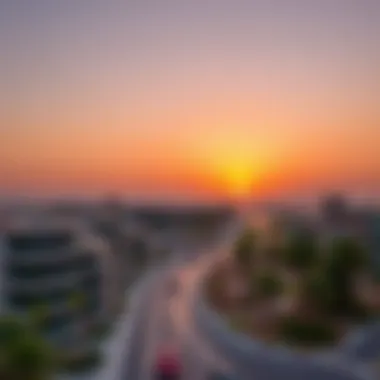
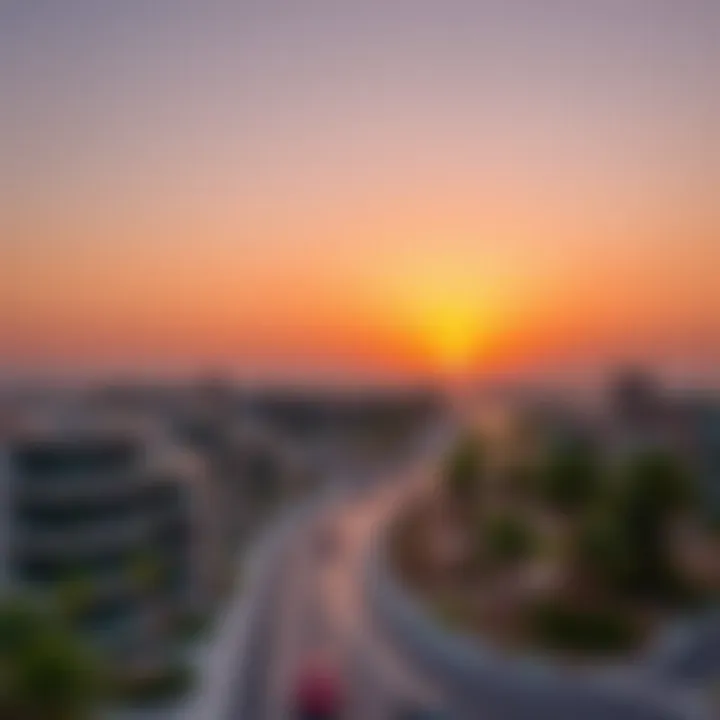
Traditional practices linked to Ras Khor come in various forms, but one notable aspect is the art of fishing, which has been perfected for generations. Local fishermen utilize methods passed down through the ages, cherishing techniques that minimize their ecological footprint while maximizing yield. This practice isn't just about catching fish; it's about honoring the traditions that sustain local livelihoods. For many, this connection to the water is as vital as the air they breathe.
Another characteristic is the seasonal festivals that rotate around the lunar calendar and celebrate the area's natural rhythms. These events bring communities together, fostering communal bonds and emphasizing collective responsibility towards their environment. Such practices highlight the interdependence of culture and ecology, presenting a harmonious cycle of life that not only benefits the community but also protects the wetlands of Ras Khor.
Art and Environment
Art and environment hold a symbiotic relationship in Ras Khor, enriching the local landscape and giving voice to the community's ethos. Local artists often draw inspiration from the vibrant ecosystems surrounding them. They create murals, sculptures, and installations that reflect not only the beauty of Ras Khor but also the urgent need for conservation.
One prominent characteristic of this relationship is the use of recycled materials in artworks. Artists repurpose what could be waste, transforming it into striking pieces that challenge the audience to confront their environmental responsibilities. The unique feature of this artistic approach is its power to draw attention to environmental issues while also beautifying public spaces.
By engaging with this art, locals and visitors alike become more aware of the ecological threats facing Ras Khor, empowering them to advocate for its protection.
“Art is the most beautiful of all lies; it asks us to confront truth through beauty.”
To sum it up, the cultural significance of Ras Khor extends far beyond its geographical coordinates. Local communities, through traditional practices and art, play a pivotal role in the stewardship of this unique ecosystem, ensuring that the bond between culture and environment remains strong. This integral relationship is a clear reminder that the preservation of such areas can yield benefits widely applicable, from enhancing quality of life to fostering economic opportunities.
Real Estate Context
The real estate landscape around Ras Khor plays a pivotal role not just in the architectural growth of Dubai but also in defining the ecological and social fabric of the area. Understanding this context helps illuminate how urban development coexists with nature, providing a unique setting that both investors and residents need to consider. As Dubai evolves, the synergy between real estate and ecological preservation becomes ever more important.
Market Trends
The real estate trends in and around Ras Khor reflect a dynamic market responding to local demand and global shifts. Property values in this area can tell a story about the relationship between urban life and nature.
Property Values
The property values near Ras Khor have shown a steady increase over the years, influenced by the area's ecological significance and urban desirability. Nestled between thriving urban centers and environmental sanctuaries, properties here boast proximity to both work and leisure. This prime positioning elevates residential and commercial property values, making them a worthy investment.
Many buyers find properties in this zone appealing due to their unique characteristics, such as views of the wetland ecosystems and access to recreational areas. Though property values can be beneficial, they also present challenges; for instance, as values rise, affordability for some residents may diminish. Balancing this demand with conservation efforts is crucial in maintaining the integrity of the community.
Investment Opportunities
Investment opportunities in Ras Khor are ripe for those looking to capitalize on a blend of ecological and urban dynamics. The area's designation as a protected ecological site attracts businesses seeking sustainable practices. Companies focusing on environmentally friendly initiatives may find the Ras Khor region particularly appealing, as it caters to a growing consumer base that values sustainability.
The allure of investment lies not only in property values but in the potential for economic growth tied to eco-tourism and sustainable development. However, prospective investors should remain aware of the limitations imposed by conservation measures. For example, while some development is encouraged, there are restrictions on structures that may disrupt the local ecosystem. This dual nature of opportunity versus regulatory constraint requires careful consideration and planning from investors.
Nearby Developments
Ras Khor serves as a focal point amidst various nearby developments, further enhancing its real estate appeal. Investments in infrastructure, such as roads and public transit, have opened up new avenues for connectivity. This development momentum makes the area attractive for those seeking both residential and commercial properties.
- Ongoing projects near Ras Khor include new housing developments that prioritize eco-friendly architecture.
- There are plans for recreational facilities that mirror the beauty of the ecosystem.
- Urban parks and amenities designed to enhance resident life are setting a trend that resonates with the local population.
In short, the real estate context surrounding Ras Khor reflects a careful balance of opportunity and responsibility, drawing in investors keen on both profitability and sustainability. The landscape is ever-evolving, and understanding market trends, property values, and nearby developments is essential for anyone looking to navigate this unique intersection of urban life and natural beauty.
Future Prospects
As Ras Khor stands at the crossroads of ecological significance and urban expansion, discussing its future prospects is critical. The unfolding narrative of Ras Khor intertwines urban development and environmental sustainability. Investors, homebuyers, realtors, expatriates, and developers must recognize the delicate balance between maximizing economic benefits and preserving the area's unique ecosystem. With the UAE's ongoing vision for sustainable development, the trajectory of Ras Khor can potentially become a model for similar initiatives globally.
Urban Development Plans
The urban development plans for Ras Khor reflect a dual priority: promoting growth while safeguarding its ecological integrity. In the coming years, planned infrastructural improvements aim to enhance connectivity and attract real estate investments without compromising the landscape's natural assets.
Key elements of the development plan include:
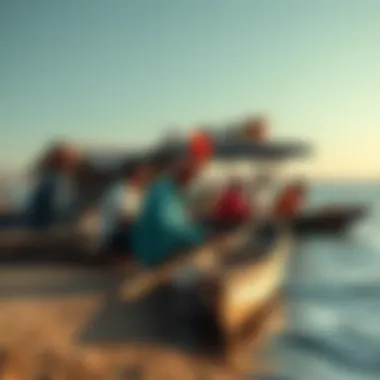
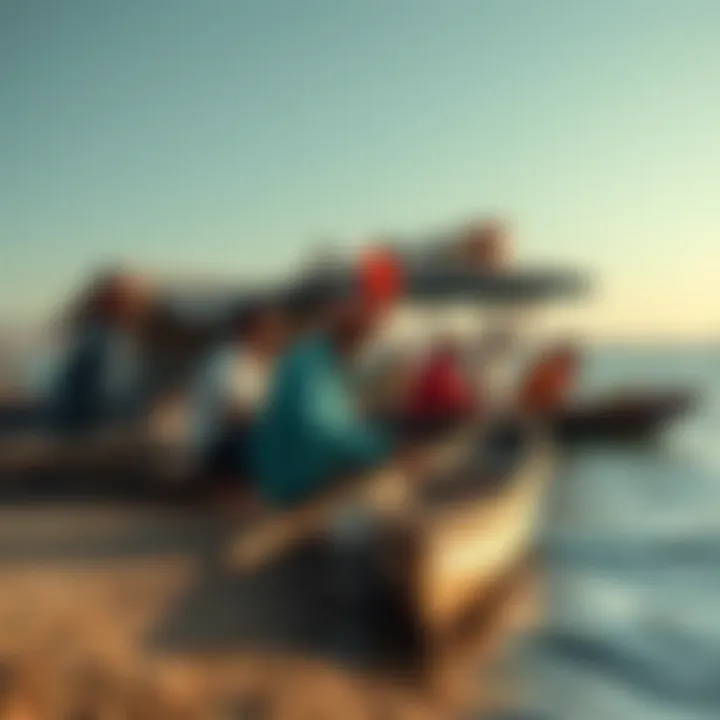
- Enhanced Accessibility: New roads and public transport routes are set to connect Ras Khor with existing urban centers, facilitating both tourist traffic and commuter access.
- Eco-Friendly Infrastructure: Projects will prioritize green building standards, employing sustainable materials and energy-efficient designs.
- Community Spaces: Development proposals emphasize creating parks and recreational areas that encourage both locals and visitors to enjoy the rich biodiversity of the region.
These plans not only present opportunities for revenue but also emphasize social responsibility. They illustrate how urban expansion can coexist with environmental conservation. As developers craft their strategies, awareness of ecological impacts will be paramount.
Implications for Biodiversity
The implications of urban development on the biodiversity of Ras Khor are profound. While growth promises short-term gains, the long-term health of the ecosystem hangs in the balance.
Understanding the consequences includes:
- Habitat Disruption: Expansion can disrupt natural habitats, affecting endemic species and migratory birds that rely on Ras Khor's wetlands.
- Pollution Levels: Increased urban activity has the potential to elevate pollution, which may harm aquatic life and plant species integral to the ecosystem.
- Conservation Initiatives: The potential for collaboration between developers and environmental stakeholders can lead to innovative solutions mitigating negative impacts.
Investors and developers will need to approach projects with foresight. Engaging with local communities and environmental organizations can ensure that development plans are sustainable, enhancing both the local economy and ecological health.
"For Ras Khor, a vision that considers both development and preservation can shape not just an important ecological area but a model city within a city."
Challenges and Threats
The identification and acknowledgment of challenges as well as threats facing Ras Khor shed light on the complexity of maintaining ecological balance within an urban setting. As the city of Dubai continues to expand, understanding these challenges is crucial for ensuring the sustainability of Ras Khor’s unique ecosystem. Protection of this area, while fostering development, can present a tightrope to walk.
Urbanization Impact
Urbanization casts a long shadow over many natural habitats, and Ras Khor is no exception. As development projects gain footing, land that once served ecological purposes transforms to meet the city’s insatiable appetite for growth. This encroachment can lead to habitat destruction, fragmentation, and degradation, forcing wildlife into smaller, more isolated spaces.
The urban landscape alters not only the physical geography but also the sociocultural dynamics of the surrounding communities. For instance, proximity to developed areas may entice higher property values, attracting investors and homebuyers, yet this growth often disregards the ecological needs of the region.
Some key considerations regarding urbanization include:
- Habitat Loss: The direct conversion of natural areas into residential or commercial properties displaces local flora and fauna.
- Pollution Increase: Higher traffic and industrial activities contribute to air and water pollution, affecting the health of the ecosystems.
- Human-Wildlife Conflicts: As animal habitats shrink, encounters between wildlife and humans become more frequent, resulting in potential harm to both parties.
The path forward must balance development with the protection of Ras Khor's biodiversity, ensuring that urban growth does not come at the cost of ecological integrity.
“Protecting our natural environment is not optional; it is essential for the sustainability of our communities.”
Climate Change Effects
Climate change is an overarching threat that compounds the challenges posed by urbanization. The ramifications of shifting climatic patterns are felt acutely at Ras Khor. Rising sea levels and increasing temperatures threaten the delicate balance of the wetlands that characterize this area. Coastal wetlands such as Ras Khor serve as vital buffers against storm surges and flooding; however, climate change is escalating the risk of these natural disasters.
Among the specific impacts of climate change on Ras Khor, we can consider:
- Increased Salinity: Higher sea levels can lead to saltwater intrusion, disrupting native plant species and affecting the overall biodiversity.
- Altered Migration Patterns: Shifts in global temperatures and weather systems can affect migratory species reliant on the wetlands for feeding and breeding.
- Biodiversity Loss: Ecosystems are fragile and overwhelmed by rapid temperature changes, potentially leading to the extinction of vulnerable species.
Addressing these issues calls for comprehensive strategies that recognize the intricate links between urban development, climate resilience, and ecological preservation. Educating stakeholders, from investors to local communities, is essential to foster collaboration in protecting Ras Khor against these formidable challenges.
Closure
As we draw to a close, it’s imperative to reflect on why Ras Khor matters in the broader ecological and urban narrative of Dubai. This unique wetland area is not just a haven for a rich diversity of flora and fauna, but it is also a critical component in the urban ecosystem of a rapidly developing metropolis. By emphasizing conservation efforts and recognizing the cultural significance of Ras Khor, stakeholders can harmonize urban development with biodiversity preservation.
Key Takeaways
- Biodiversity: Ras Khor is home to a wide range of species that contribute significantly to the ecological balance. The wetland functions as a vital stopover for migratory birds, playing an indispensable role in global biodiversity.
- Community Involvement: Engaging local communities is essential for effective conservation. Their knowledge and commitment can enhance ecological practices in Ras Khor, benefiting both people and the environment.
- Economic Potential: With increasing attention from property developers and investors, understanding the dynamics of Ras Khor can lead to lucrative opportunities while promoting sustainable practices that respect the area's heritage and ecology.
- Legal Protections: The designation of Ras Khor as a protected area elevates its importance. Government initiatives are crucial for safeguarding its ecological integrity against the pressures of urbanization.
- Urban Development Impact: Balancing urban growth with environmental conservation is challenging but necessary. Future projects must consider the implications for biodiversity to sustain the ecological fabric that Ras Khor offers.
Call to Action
Given the significance of Ras Khor, it is vital for all stakeholders—investors, urban planners, developers, and residents—to advocate for its protection. As urbanization continues to encroach on natural habitats, becoming a champion for Ras Khor means:
- Educating Others: Share knowledge about the ecological and cultural importance of Ras Khor within your communities.
- Supporting Conservation Initiatives: Get involved with or donate to local organizations aimed at preserving Ras Khor’s unique ecosystem.
- Advocating for Sustainable Development: Encourage policymakers and developers to prioritize environmental considerations in urban planning.
- Visiting Responsibly: When visiting Ras Khor, follow guidelines that promote its preservation while enjoying its beauty. Respect its unique habitats by adhering to designated paths and minimizing disturbance.
Ras Khor exemplifies the intersection of nature and urban life. By taking steps to protect it, we not only safeguard its ecological treasures but also enhance the quality of life for future generations in Dubai.










